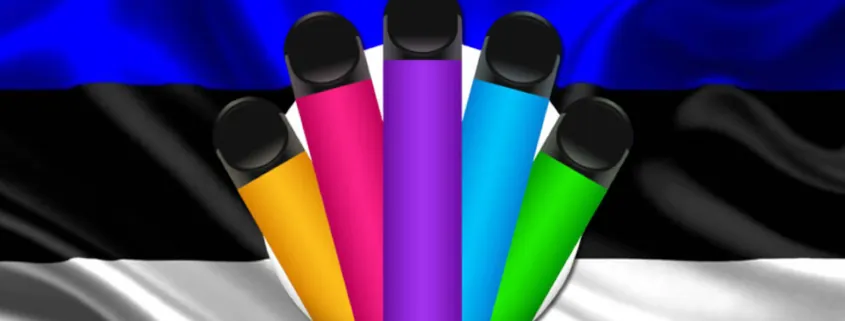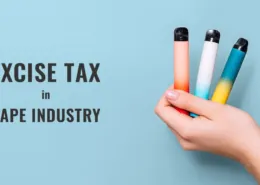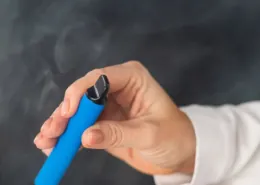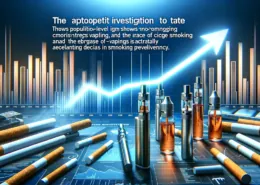Estonia Vaping Trends, Regulations, and Opportunities
Estonia, a Baltic nation known for its progressive approach to technology and innovation, is witnessing a fascinating shift in nicotine consumption habits. As smoking rates decline, vaping is on the rise, reflecting a global trend towards alternative nicotine delivery systems. This article delves into the dynamics driving this evolving vaping market, the strict regulations shaping its future, and the opportunities it presents for vape business owners.
Smoking vs. Vaping in Estonia: A Statistical Overview
Estonia has seen a remarkable decline in smoking rates over the past decade. According to Eurobarometer surveys, the prevalence of current smokers in the general population dropped from 33% in 2006 to approximately 23% in 2017. In contrast, the use of vaping devices, or e-cigarettes, has been steadily increasing, mirroring a global shift towards alternative nicotine consumption methods.
The Rise of Vaping Culture in Estonia
As vaping gains popularity in Estonia, a new culture is emerging, evident in the proliferation of vape shops and community events. The wide variety of e-liquids, devices, and accessories available in vape shops and online stores caters to different preferences, reflecting the growing acceptance and integration of vaping into Estonian society.
Navigating the Regulatory Landscape
Estonia’s regulatory framework for vaping is guided by the Tobacco Act (2016), which categorizes e-cigarettes as tobacco-related products subject to stringent regulations. The country’s laws align with the EU Tobacco Products Directive (TPD), mandating strict rules on product ingredients, packaging, and sales restrictions.
E-Liquid Laws and Flavor Bans
Estonia imposes stringent regulations on e-liquid ingredients, permitting only tobacco and menthol variants. The ban on flavored e-liquids aims to deter youth initiation and promote harm reduction. Sales to individuals under 18 years of age are strictly prohibited, and restrictions are placed on advertising, promotion, and sponsorship.
Taxation and Packaging Requirements
E-liquid products in Estonia are subject to a specific tax rate of 0.2 Euro per milliliter, applicable to both nicotine and non-nicotine variants. Packaging requirements mandate the inclusion of a unique serial number (UFI), a detailed ingredient list, and Estonian language labels. Health warnings on nicotine addiction and leaflets with product information must accompany the packaging.
Retail Sale Restrictions
Estonian restrictions on the retail sale of vaping products encompass various locations, including child care institutions, schools, hospitals, and pharmacies. Sales from vending machines, carrier trade, and distance sales face stringent prohibitions, reflecting the country’s commitment to regulating the availability and accessibility of vaping products.

ECIGATOR
Ecigator is one of the well-known vape brands spun off from FM Technology Co., Ltd, it’s an ISO-certified disposable vape manufacturer for OEMs, ODMs, and OBM since 2010. The founder team comes from top firms with more than 10 years of experience in the vaping industry and has devoted thousands of hours to providing users with a better and better experience.
The Path to a Smoke-Free Estonia
Estonia remains committed to fostering a smoke-free future through comprehensive tobacco control initiatives and public health campaigns. Efforts to enforce smoke-free laws in public places and workplaces underscore the government’s dedication to safeguarding public health and promoting tobacco cessation.
Harm reduction practices play a pivotal role in Estonia’s public health agenda, offering smokers alternative nicotine consumption methods to traditional tobacco products. The availability of e-cigarettes and nicotine replacement therapy (NRT) options provides viable alternatives for smokers looking to quit.
Opportunities for Vape Business Owners
The future of vaping in Estonia presents promising opportunities for vape business owners seeking to enter the market. By focusing on compliance with existing regulations and catering to consumer preferences, manufacturers can explore niche markets, develop high-quality products, and forge partnerships with retailers to capitalize on Estonia’s growing vaping industry.
To succeed in the Estonian vaping market, businesses must:
- Navigate regulatory compliance: Stay ahead of regulatory requirements by understanding Estonia’s vape laws and regulations.
- Tailor products to consumer preferences: Conduct thorough market research to identify emerging trends and consumer preferences in Estonia’s vaping market.
- Foster strategic partnerships: Collaborate with established industry players to streamline distribution channels and enhance brand visibility among Estonian vapers.
- Prioritize product quality and innovation: Invest in premium ingredients, rigorous testing processes, and flavor development to deliver exceptional products that resonate with Estonian consumers.
- Stay informed and adapt: Regularly monitor changes in legislation, market dynamics, and competitor activities to stay competitive and agile in Estonia’s dynamic vaping landscape.
Conclusion
Estonia’s vaping industry is undergoing a significant transformation, driven by shifting consumer preferences and strict regulations. As smoking rates decline and vaping gains popularity, the country is embracing a new culture that presents both challenges and opportunities for e-liquid business owners.
By navigating the complex regulatory landscape, tailoring products to consumer preferences, fostering strategic partnerships, prioritizing quality and innovation, and staying informed, businesses can position themselves for success in Estonia’s evolving vaping market. As the country moves towards a smoke-free future, the vaping industry is poised to play a crucial role in shaping Estonia’s public health landscape.
References:
- Is It Illegal to Vape or Smoke While Driving in Massachusetts? - August 5, 2025
- Austria Plans to Ban Disposable E-Cigarettes - August 5, 2025
- Vaping vs. THC Drinks: Which Cannabis Option Is Right for You? - August 4, 2025









